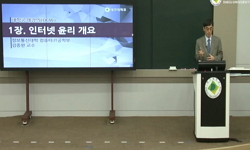Objective This study aimed to validate the reliability and validity of the Diagnostic Interview for the Internet Addiction Scale (DIA) among Korean children and adolescents in the clinical setting. Methods We collected the clinical data from universi...
http://chineseinput.net/에서 pinyin(병음)방식으로 중국어를 변환할 수 있습니다.
변환된 중국어를 복사하여 사용하시면 됩니다.
- 中文 을 입력하시려면 zhongwen을 입력하시고 space를누르시면됩니다.
- 北京 을 입력하시려면 beijing을 입력하시고 space를 누르시면 됩니다.




Structural Validity of the Diagnostic Interview for Internet Addiction Scale for Clinical Samples in Korean Children and Adolescents: Exploratory and Confirmatory Factor Analysis
한글로보기https://www.riss.kr/link?id=A109566760
- 저자
- 발행기관
- 학술지명
- 권호사항
-
발행연도
2025
-
작성언어
-
- 주제어
-
KDC
510
-
등재정보
SCIE,SSCI,SCOPUS,KCI등재
-
자료형태
학술저널
-
수록면
167-174(8쪽)
- DOI식별코드
- 제공처
-
0
상세조회 -
0
다운로드
부가정보
다국어 초록 (Multilingual Abstract)
Methods We collected the clinical data from university hospitals in South Korea and 194 children and adolescents (aged 7–18 years) completed the questionnaire. The content validity was conducted on 10 items of the DIA and an internal consistency test was performed for the verification of reliability.
Results Participants on average, aged 13.17 years (standard deviation=2.46), and 75.3% (n=146) were boys. The DIA was highly correlated with the scores of the Korean scale for Internet addiction for adolescents, Young’s Internet Addiction Test, Internet addiction proneness scale for children and adolescents. The overall sampling suitability of the 10-item scale was tested using the Kaiser–Meyer–Olkin, resulting in a high value of 0.861. The DIA revealed a two-factor structure and the Cronbach’s alpha correlation coefficient for the total scale was 0.806. Confirmatory factor analysis showed an acceptable model fit (root-mean square error of approximation=0.058, comparative fit index=0.950, and Tucker-Lewis Index=0.919).
Conclusion The DIA may suggest in-depth-scale examinations of the factors that influence Internet addiction. We may expect that DIA would be used efficiently for the diagnosing of Internet addiction and further studies for the assessment.
Objective This study aimed to validate the reliability and validity of the Diagnostic Interview for the Internet Addiction Scale (DIA) among Korean children and adolescents in the clinical setting.
Methods We collected the clinical data from university hospitals in South Korea and 194 children and adolescents (aged 7–18 years) completed the questionnaire. The content validity was conducted on 10 items of the DIA and an internal consistency test was performed for the verification of reliability.
Results Participants on average, aged 13.17 years (standard deviation=2.46), and 75.3% (n=146) were boys. The DIA was highly correlated with the scores of the Korean scale for Internet addiction for adolescents, Young’s Internet Addiction Test, Internet addiction proneness scale for children and adolescents. The overall sampling suitability of the 10-item scale was tested using the Kaiser–Meyer–Olkin, resulting in a high value of 0.861. The DIA revealed a two-factor structure and the Cronbach’s alpha correlation coefficient for the total scale was 0.806. Confirmatory factor analysis showed an acceptable model fit (root-mean square error of approximation=0.058, comparative fit index=0.950, and Tucker-Lewis Index=0.919).
Conclusion The DIA may suggest in-depth-scale examinations of the factors that influence Internet addiction. We may expect that DIA would be used efficiently for the diagnosing of Internet addiction and further studies for the assessment.
목차 (Table of Contents)
- INTRODUCTION
- METHODS
- RESULTS
- DISCUSSION
- REFERENCES
- INTRODUCTION
- METHODS
- RESULTS
- DISCUSSION
- REFERENCES
동일학술지(권/호) 다른 논문
-
- 대한신경정신의학회
- Lin Chen(Lin Chen)
- 2025
- SCIE,SSCI,SCOPUS,KCI등재
-
- 대한신경정신의학회
- Jumyung Um(Jumyung Um)
- 2025
- SCIE,SSCI,SCOPUS,KCI등재
-
- 대한신경정신의학회
- Seung Yeun Jang(Seung Yeun Jang)
- 2025
- SCIE,SSCI,SCOPUS,KCI등재
-
- 대한신경정신의학회
- Chung-Chih Hsu(Chung-Chih Hsu)
- 2025
- SCIE,SSCI,SCOPUS,KCI등재




 KCI
KCI 스콜라
스콜라


